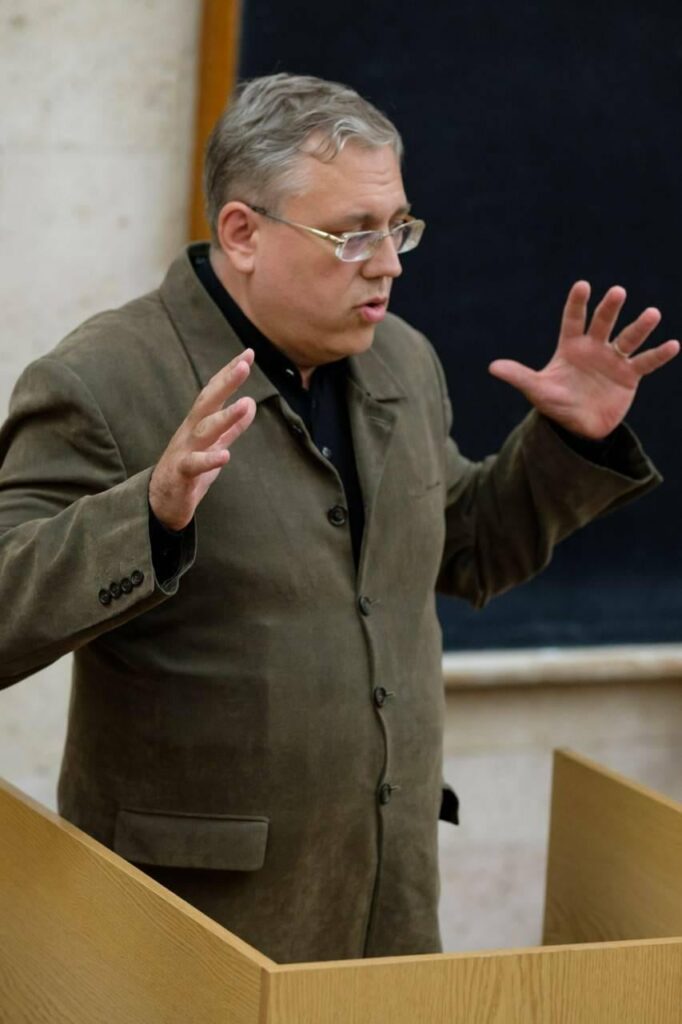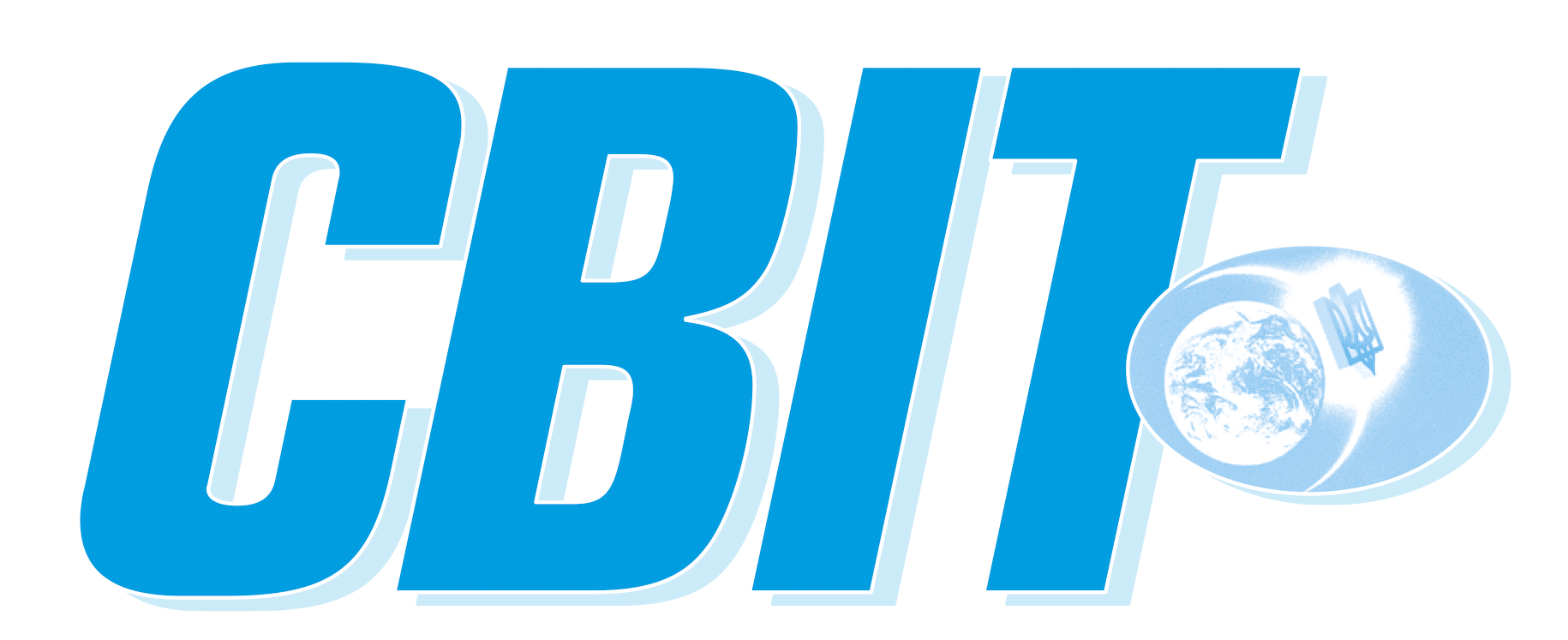Oleksiy Nyporko says that since the age of 16 he became interested in science “because of curiosity and interest in the world of all living things.” In 1993 he graduated from the Faculty of Biology of the Taras Shevchenko National University of Kyiv, received the qualification of the “biologist, cell biologist and genetic engineer; teacher of biology and chemistry “; in 1999 he completed the postgraduate study at the Institute of Cell Biology and Genetic Engineering of the National Academy of Sciences of Ukraine.

He presented the PhD thesis “Features of the spatial structure of tubulin as a basis for the cellular response of plants to the action of herbicides dinitroaniline and phosphoramide series” in 2006, his thesis advisor was Doctor of Biological Sciences, Academician of the NAS of Ukraine Yaroslav Blum. Since February 2010, Oleksiy Nyporko works at his alma mater, first as an associate professor, and since recently as the head of the Department of Biotechnology and Bioinformatics at the Institute of High Technologies.
Among the research achievements of the scientist let us mention over 70 monographs and scientific papers, the title of laureate of the Prize of the President of Ukraine for young scientists, as well as international internships and cooperation.
Currently, Oleksiy Nyporko manages the project whose grant sponsor is the National Research Foundation of Ukraine, and one of the tasks is the development of new highly selective inhibitors that can increase the effectiveness of combating the pulmonary insufficiency, help restore normal lung ventilation and, as a result, help treat severe states with Covid-19. The topic is very hot. In May of this year, he co-authored the paper which was published in the Proceedings of the National Academy of Sciences of the United States of America, IF 9.412 with the highest score in the Web of Science database among research and teaching staff of the National University of Kyiv.
At the beginning of the new academic year, which, unfortunately, does not reduce the risk of a new exacerbation of coronavirus disease, we asked the scientist how his work is developing.
– The sphere of my scientific interests is everything that concerns the mechanisms of biomolecular recognition, – Oleksiy Nyporko says. – In short, I explore the features of the spatial structure of a particular protein (or other biomacromolecule), determining its affinity for certain chemical factors and monitoring the process of their interaction. Understanding these features makes it possible to rationally select or develop compounds that are effective against the desired biomolecular targets and in their “working” concentrations do not interact with other components of the cell. Medicines and plant protection products based on such compounds have the advantage not only because of their high efficacy but also due to fewer adverse effects on the human body and the environment.
I am mainly interested in general mechanisms of molecular recognition, especially distant mechanisms, when molecules are still at a distance from each other, but the process of mutual orientation starts. More specifically, it is implementation of substrate selectivity of a well-known enzyme DNA polymerase, which provides reproduction and integrity maintenance of the DNA molecules and determines different accuracy. I have publications on this topic in the Journal of Bionanoscience and in the Structural Chemistry, we continue to work intensively in this sphere.
– The NRFU grant project you manage, is called “Rational design of muscarinic acetylcholine receptor inhibitors as potential components of combination therapy for chronic obstructive pulmonary disease (COPD) and asthma”. What is it?
– The main goal is to develop new highly selective inhibitors of potential components of combination therapy for a number of serious diseases using computer simulation and virtual screening methods. Excessive activity of these receptors in the walls of the airways results in a stable decrease in the size of the breathing opening, chronic pulmonary hypoventilation and, accordingly, contributes to the evolution and negative course of the disease. Our team consists of six members: three of them represent the Taras Shevchenko National University, two – the Institute of Molecular Biology and Genetics of the National Academy of Sciences of Ukraine, and one member represents the Receptor.AI scientific startup.
– Is this rather a theoretical study?
– No, it is a 90% applied project. The new fundamental knowledge we have already gained during its execution is the location of the sites of potential inhibitors binding on the surface of the receptors which are studied. Everything else is the development of new potential medicines. Why is it important to develop medicines to cure emphysema? According to the WHO, this disease took the “honorable” third place among the causes of death in the whole world last year (after coronary heart disease and cerebral hemorrhage). The known drugs that inhibit muscarinic receptor activity and are included in the emphysema treatment protocol are not selective enough and cause negative adverse effects, and can even cause myocardial infarction.
Therefore, the development of new inhibitors that are highly selective for muscarinic acetylcholine receptors may be a breakthrough in the treatment of COPD, asthma and other dangerous pathologies.
– And how does it affect Covid-19, the research team works on?
– Of course, inhibitors of our receptors are not antiviral drugs. However, due to the fact that severe forms of Covid are accompanied by pulmonary insufficiency, the use of drugs that help restore normal lung ventilation may increase the effectiveness of the combat against such states. Undoubtedly, pulmonary insufficiency during Covid-19 is due not only to narrowing of the airways, its role in the emergence of a life-threatening state is also significant. Therefore, the project outcomes can potentially contribute to the combat against severe states in Covid.
– At what stage of implementation is the project and what has already been done?
– Now we are at a very important stage of implementation – it is biological testing of the activity of compounds which are selected using computational approaches. If the result is successful, we will perform chemical modification of the most promising compounds to improve their affinity for target receptors.
– Your scientific papers, written in international collaboration with scientists from other countries, achieve high research scores. Tell us about your cooperation.
– We cooperate with the team of the Australian Herbicide Resistance Initiative (University of Western Australia) since 2015 (at one time they demonstrated interest in our publication on the spatial distribution of mutations that ensure the resistance of living organisms to antimicrotubule compounds).
As there were no structural analysis specialists in their team, they offered me cooperation as an expert in this sphere.

The current result is four joint scientific papers on molecular, structural and cellular mechanisms that ensure the emergence of resistance to widely used herbicides in different plant species. These mechanisms are quite diverse. In our work, published in PNAS (Proceedings of the National Academy of Sciences – author), we demonstrate the mechanism that provides resistance to the known herbicide glyphosate due to its removal from the cell by a transmembrane transporter protein of the ABC family. The transporters of this family are widespread, they are present not only in plants but also in humans, and provide cellular resistance to various chemical factors. As for the process of our cooperation, foreign colleagues study the resistance of a particular plant species to a particular plant protection product, identify changes that occur at the molecular and cellular levels. We analyze changes at the level of the spatial structure of molecules, reconcile our data, look for inaccuracies, if any, and engage in literary work.
– Please advise young scientists how to publish a paper in a rating journal. How do experienced scientists do it?
– The first stage is to search for a rating magazine, and preferably several magazines, whose topics correspond to the topic of your research. The second is to identify candidates for potential reviewers (serious scientific journals usually ask for two or three candidates for possible reviewers, and in some cases specialists with a conflict of interest who cannot be reviewers because of their prejudice attitude).
Of course, the formal requirements for the manuscript put forward by the selected journal must be met. It is better to submit the paper to the highest rated journal selected at the first stage. Then the manuscript is either sent for review or rejected immediately. It can be rejected without review for various, usually subjective reasons, and then you should not try to submit this paper to this journal – you should better pass to the next item in the list of candidate journals. If the paper was passed on to reviewers, the success is 70%. Even in the case of two negative referee reports (and this is a formal reason for rejecting the paper), positive scenarios are possible. The paper rejected on the basis of negative referee reports can be resubmitted to the same magazine after taking into account the comments and recommendations of reviewers, or giving a clear and reasoned justification of your scientific position. My personal experience shows that if the paper is passed on to reviewers, then it will be published sooner or later. However, we need to be ready for discussions with reviewers (let’s not forget that scientists present the results of their work to the general public in the form of their defense), and the best policy in this situation is calm perseverance. The only case when the resistance of the reviewers could not be overcome was, unfortunately, related to a national magazine, although not very rated.
– In addition to purely scientific activity, you have lots of teaching duties. Do you have certain principles that guide you in the process of your teaching activity?
-Yes, a few of them. Novelty, interest, communication, emotional involvement, improvisation. And communication with students on the equal footing!
– Is it difficult to find an approach to modern students?
– It is easier than it may seem at first glance. You need to be genuinely interested in what you tell the students. And sincerely interested in communicating with them. But by establishing emotional contact with a person, you can load him or her with wrong ideas. Therefore, when communicating with young colleagues, I always encourage them to apply the principles of critical data analysis both in everyday life and in scientific work.
– Has anything changed in your teaching practice with gaining experience?
– Yes, I used to try to follow the established scheme for each lecture. Then I began to improvise more. It quickly became clear that any information, even a known one, should be verified. Especially, because we teach things at the forefront of modern biology. Almost immediately I try to establish a dialogue with students at the lectures, I provoke them to put me questions.
Although, I remember such an interesting situation: a girl who did not ask any questions during the academic year, began to answer the exam questions on modern information technologies in biology. Her answer was evaluated at 100 points with a plus. I wondered why she never asked any question. She answered: “Because I understand everything anyway.” So, questions are not always an indicator of interest.
And very often I remember July 2010, when there was the first enrollment to the master’s course of the Institute of High Technologies, we were anxiously waiting if there would be applicants. Finally, our first applicant appeared. It was very exciting.
– And what in the future? What are your plans?
– Defense of the doctoral thesis, accreditation of the master’s educational program “Bioinformatics and Structural Biology”, significant renewal of the rest of our educational programs, expansion of international cooperation (we carry on negotiations with experts from the University of St. Louis, USA on joint research projects). Ahead is the work that interests and brings results.
Alina VOLYK carried on the conversation. Svit newspaper, №33 – 34, September, 2021
